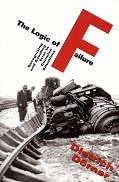This is the first half of a potentially excellent book. Dörner uses computer simulations (more or less sophisticated versions of Sim City) to test under laboratory conditions how real people solve complex problems. These are problems where the variables to be controlled are linked in a non-linear manner, and where new problems can arise as a result of solving the old problems. Real world problems, that is. And most people are pretty useless at it, too, with their well-meaning interventions soon driving the (simulated) populations into disastrous famines or recessions.
Dörner uses these simulation results to identify why people make these mistakes. (And also uses Chernobyl as a case study to show that real world behaviour matches this more artificial scenarios in several ways.) The common features that make the problems difficult are in the main:
- complexity: many interdependent features that cannot be understood in isolation
- dynamics: the world changes, creating time pressure
- opacity: lack of visibility of certain parameters characterising the problem
And the common problems that people have when faced with such problems are often:
- failure to state and prioritise specific goals
- failure to reprioritise as events change
- failure to anticipate side effects and long term consequences
- failure to gather the right amount of information (neither to rush ahead with no plan, nor to excessively overplan)
- failure to realise that actions have delayed consequences (so overcorrecting when the results of an intervention do not show immediately)
- failure to build suitably complex, individual models of the situation
- failure to monitor progress and re-evaluate actions
So far, so good. All these results appear to be based on detailed experiments and observations. But then Dörner presents a (to my mind) rather oversimplified and overgeneralised model of problem solving, and claims that people should follow this when tackling complex problems. What appears to be missing at this point is a similar set of experiments to validate this model. Where is the comparison of the performance of a control population, and people who use the model? How can we know that this model is any better that the current problem solving approaches people are criticised for using? (For example, I was a little concerned that discussions of the non-linear behaviour of predator-prey relationships concentrated on its cyclic nature, with little or no reference to its chaotic nature.)
One of the few experiments that is reported is of training people in "strategic thinking", and showing they perform no better than the control population, leading to the conclusion that people need experience, not just training. The use of computer simulations as a tool to help give people such experience is mentioned only briefly in the concluding chapter. Maybe it would be interesting to do a similar set of experiments today, using a sample of people brought up playing games like Sim City?
I was surprised to see so little mention of the building of models of complex situations as part of the problem-solving process itself. In particular, what about using specific simulations as models of real situations, to help people investigate and plan their real problems?
(One minor niggle. This is a translation from the German original, but the references are not translated. It would have been helpful to substitute (or augment) references to general results with equivalent English-language references. I realise that references to specific experiments and results cannot easily have such substitutes, but a translation of the titles of the articles would help.)
So, this delivers the first half of the promise of the sub-title, but I think more work is needed to deliver the second half.
